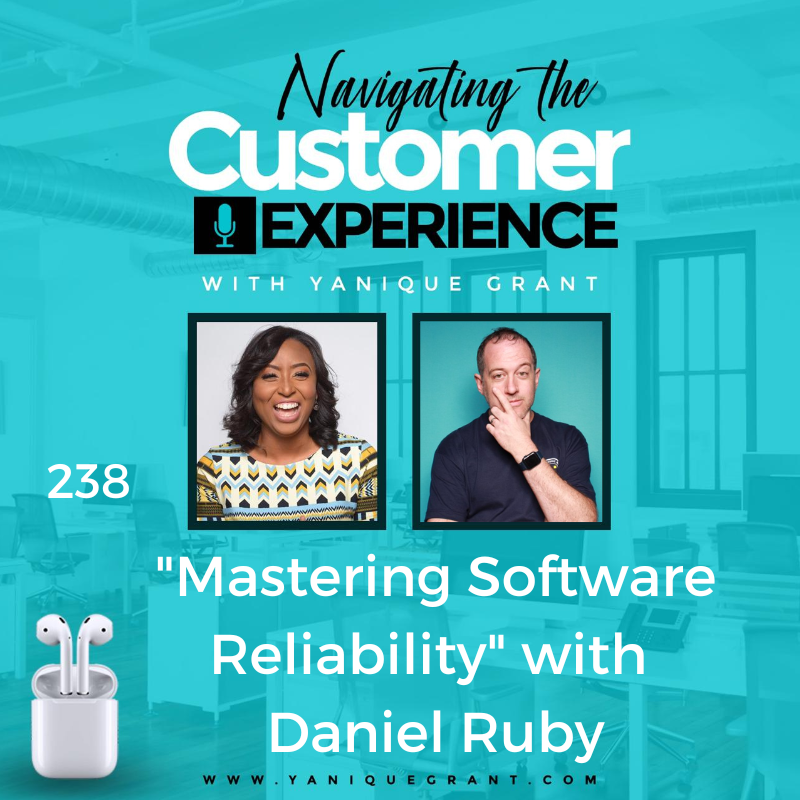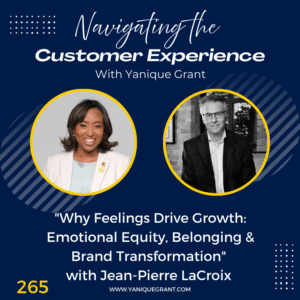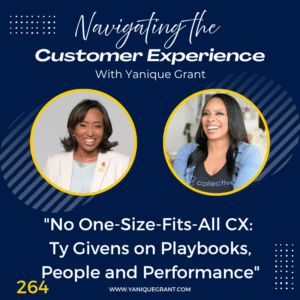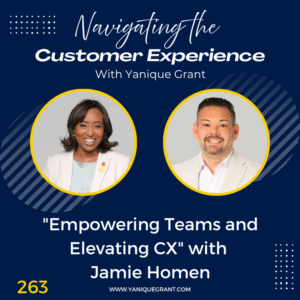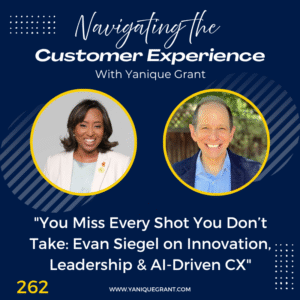Daniel Ruby is a VP of Marketing at Nobl9. Ruby is a dynamic marketing executive with a focus on B2B marketing, and has significant experience building teams and driving successful, data-driven programs for a range of startups and mid-sized organizations. As the Director of Online Marketing for Localytics, Ruby was the first marketing hire and scaled his team to a full-fledged marketing department with domain specialists focused on mobile apps.
Ruby also has a background in journalism and spent several years guest lecturing marketing courses at Bentley University, bringing this dynamic skill set to his current role at Nobl9. Ruby holds a BA in Broadcast Journalism from the University of Missouri-Columbia and an MBA in International Business from Brandeis University.
Questions
· We always like to start off by asking our guests if they could share with us a little bit about their journey, how you got from where you were to where you are today.
· Could you share with our listeners, what is Nobl9 and what exactly are you providing? What service are you providing? How are you adding value to your customers lives using this platform?
· Could you give us an example, like a use case of an application, you can choose any industry, and kind of just give us an idea of what that looks like so the audience can get a more practical view.
· Could distinguish or differentiate for our listeners, what’s the difference between an SLO and an SLA?
· Now, Daniel, could you share with us what’s the one online resource, tool, website or app that you absolutely can’t live without in your business?
· Where can listeners find you online?
· Before we wrap our episodes up, we always like to ask our guests, do you have a quote or saying that during times of adversity or challenge, you’ll tend to revert to this quote if for any reason you get derailed or you get off track.
Highlights
Daniel’s Journey
Me: Now, Daniel, could you share with our listeners, we always like to start off by asking our guests if they could share with us a little bit about their journey, how you got from where you were to where you are today.
Daniel shared that he was a journalist for a while, and kind of realized that there was not much of a market for it, so he kind of went and got an MBA to get a job, and kind of fell backwards into marketing as it is. And over the years, he’s been with more than 10, mostly 10 startups, driving marketing, driving the customer experience in terms of from the moment that they’re introduced to them as a brand until the moment that they no longer want to be or need to be working with them.
He finds a lot of joy in trying to make that experience pleasant, for lack of a better term. He’s self-taught with most of the marketing stuff that he does, and he’s kind of over the course of the years he’s become very arrogantly convinced about a few core tenets of really communicating to customers and communicating to potential customers that have served him well, and it kind of always comes back to giving value at every step of the journey.
About Nobl9 – Enhancing Software Reliability and Value for Your Business
Me: Now, could you share with our listeners, what is Nobl9 and what exactly are you providing? What service are you providing? How are you adding value to your customers lives using this platform?
Daniel shared that Nobl9 is basically a platform for software reliability. So, if we think about how somebody engages with a digital product, or even an in-person product with a digital back end to it. They are the premier, and kind of really only well-established provider of what’s called Service Level Objectives, or SLOs. And an SLO was basically taking all of the different data points that make up your product, be it from the software, from the infrastructure, from third party microservices, etc, etc, etc, and rolls it up and actually gives a customer centric view into how reliable is their product.
And the reason that they do this is because most reliability, historically has been around is the product up. Is it up? Is it down? But anybody who’s ever used a mobile app or a digital product, or even like a scan to pay service at a cafe knows that it’s not just is it up? Is it working, or is everything within it doing what it’s supposed to do?
So, he knows marketers like himself have taken the word holistic and kind of beaten it to death. But they do provide a holistic customer centric view. What is the customer experience like when actually using your product?
Me: So, Nobl9 is helping the application to maintain its reliability and have as little or no downtime as possible while the customer is interacting with it correct?
Daniel agreed, correct and kind of beyond downtime, is it, does it load fast enough?
Do all of the different features load fast enough?
Is there anything blocking my ability as a customer to buy from you or to use your service, or whatever you’re trying to do?
So, that’s effectively what they do.
Practical Use Case – How Nobl9 Enhances Software Reliability
Me: Okay, could you give us an example, like a use case of an application, you can choose any industry, and kind of just give us an idea of what that looks like so the audience can get a more practical view.
Daniel shared that it’s a little engineering, and he’s a marketer so he feels like he’s not necessarily smart enough to completely understand the engineering speak of it. But if you think about like an Ecommerce app, if you open up the app and it loads in traditional reliability, that’s reliable. But how many times have you gone into an app.
So, let’s say your path in using E commerce app is, you’re going to load the app, going to search for the product that he wants to buy, he’s going to add it to his cart, he’s going to go to his cart, he’s going to check out. And maybe there’s a login to My Account somewhere in the way.
With SLOs, what you can do is you can have all of the different steps of that path viewed as part of this overarching experience with the app. So, if you go to add something to your cart, the app sits there and hangs, that’s not good reliability.
If you go to the cart itself, and for whatever reason you go to pay and like the app’s connection to PayPal for whatever reason isn’t working, and you get this message back that says, hey, we can’t complete your payment, try another credit card or something, that’s a bad experience. And that’s the kind of reliability breakdown that leads people to quit using a product.
So, they make sure that strategically, all of the things that make up that path, you’ll have a server dedicated to your shopping cart, you’ll have a micro service that is dedicated to completing a purchase. They make sure that all of that you’ve got visibility into how the experience is for the end user, not just some third-party service that tries to connect and says yes, it can connect, no it can’t connect. It’s the whole experience of a digital product and they make it easy to understand.
Understanding the Difference – SLOs vs. SLAs
Me: Now, at the beginning, you mentioned that it’s based on your SLOs or Service Level Objectives. And just wanted to know if you could distinguish or differentiate for our listeners, what’s the difference between an SLO and an SLA?
Daniel stated that that’s a great question. So, an SLA is typically an agreement that you have with your users. You say you’ll be able to use my product or my service xx percent of the time. And that’s more of a contractual conversation than it is, a reliability conversation. When you start actually building it, in order to make sure that you’re achieving this SLA that you’ve agreed upon with your clients, you’ve got to make sure that you know all of these different elements of their experience are operating at a certain efficiency. So, he hates to over complicate things, but there’s actually a step in between called an SLI, a Service Level Indicator.
And so, a Service Level Indicator is things like, “I want my website to load in less than 100 milliseconds.”That’s a Service Level Indicator. And the SLI is effectively a consistent goal, but then what you do with SLOs is you take that a little bit further.
So, an SLO operates within what’s called an error budget, and you get a certain number of errors per month, per week, however, you want to set it up. And an error is when you don’t meet that SLI and you say, “I know that it’s maybe not impossible, but either improbable or just extremely expensive to make my website load in less than 100 seconds every single time.”
So, what an SLO does is it says, okay, I expect to meet this SLI however often I have decided is actually impactful on the customer experience, and whenever I don’t, you get an error, and at that point, you’re like, okay, it’s an error, but an error is not an outage.
Daniel stated that he doesn’t know if he’s explaining this really well, but basically if you look at an SLO graph, it’s going to be going down into the right and that is your budget. You say, okay, I expect this part of my service will meet my everyday life 95% of the time. And then you see the little graph going down, which, every time it doesn’t meet that, it froze an error, and a certain amount of errors, it’s just part of digital product development is understanding that you have to accept some errors. 100% perfection, it’s impossible.
Me: Does not exist.
Daniel agreed, it does not exist. And a lot of people think about reliability in the number of nines, “My product is available 99.99% of the time.” That would be called four nines. Every nine that you add to that number basically increases your IT costs by an order of magnitude. So, at a certain point, you got to understand with SLOs are really the ideal way to do it.
At what point does this actually impact my customers?
At what point does this actually impact my users?
It allows you to be strategic, and it allows you to see things when they begin. So, you mentioned outages earlier, an outage, your whole product crashes, it’s unavailable to anybody. Those don’t happen in a vacuum, there’s something that causes them. And if you’ve got an SLO or a set of SLOs really, displaying the health of your service, the health of your product, you’re suddenly going to see a bunch of errors coming in.
And you may or may not have enough forewarning to say, “Oh, crap, we’re about to have an outage. Well, this server in my cloud provider is having massive latency issues, it looks like the server is about to crash, and that’s going to take everything down.” You can have a little bit more of a runway to try and identify the actual issue behind a potential outage. And that’s where you strategically define how much, how many errors can I tolerate in a month?
And then you basically have a real time view at all times.
Is my product, is my service running the way I expect it to, and the way I expect it to is from the perspective of the customer. Are my customers able to do what they expect to be able to do when they launch my app, or when they use my product.
App, Website or Tool that Daniel Absolutely Can’t Live Without in His Business
When asked about online resource that he can’t live without in his business, Daniel shared that personally, it’sHubSpot. He spent a few years as a HubSpot consultant, a third-party consultant for HubSpot integrations. And he could say a marketing automation platform, but he got a fanboy a little bit about HubSpot because it takes everything that used to be complicated about sales and marketing and customer support and customer experience, and kind of rolls it up. You’ve got your CRM, you’ve got your automation platform, you’ve got your email platform. He’s actually taken to feeding his HubSpot metrics into Nobl9 SLO lately, because there’s so much rich data within HubSpot.
And he’s been running little things like, they’ll change a script for their biz dev team. And then they’ll just run a metric on calls connected to calls having a success, either a demo or a follow up request.
And HubSpot’s got such great data, and then he can turn that into an SLO where he can say, “Okay, I expect the submission rate on my forms to be X percent. I expect the completion rate of our inside sales calls to be X percent over 80% of the time.”
And he can run that in an SLO, he can see that like if he changes something, but simple little things, if he changes the colour of the submit button on a form, he can see in real time what the view to submission rate is that’s changing, and he can act on that. He can put a little note in the SLO with that time stamp and say, “Hey, I changed the color of this button” and see how that’s making an impact. Or, if he looks in HubSpot and see, “Oh, crap, my submission rate has been terrible for the past 36 hours, what’s happened?” And he can go into his SLO and say, “Oh, there’s a little note here, I changed something in the UX. I changed something colour wise. I added a question, I removed a question.” And you see direct historical cause for that.
But going back to HubSpot in general, he really respects HubSpot’s approach to they call it the flywheel, which is all about delighting customers and delighting prospects.
And they really do a great job of giving you the tools to actually give value in your marketing and sales and customer service processes. He doesn’t know what he’s do without HubSpot right now, he’d probably try and hack something together with Salesforce and Marketo and be more complicated and less easy to get adoption internally. But luckily, he doesn’t need to.
Where can listeners find Daniel online?
LinkedIn – Nobl9inc
X – @nobl9inc
Quote or Saying that During Times of Adversity Daniel Uses
When asked about a quote or saying that he tends to revert, Daniel shared, “Nothing is a failure unless you fail to learn from it.” He stated that he’s got a great team that he works with at Nobl9. And some are early in their career, some have been working in marketing for several years, some have advanced degrees, some don’t.
And so, he’s been with Nobl9 since January, and one of the things that he wanted to do quickly was make sure that people were comfortable making mistakes and understanding that an action and its outcome is not the end of that process. If you don’t learn from it, why it worked, why it didn’t, then you’ve made a mistake. But failure is as important an element in driving success in any business scenario. So, he likes making sure that people know that, and he likes making sure that they feel comfortable, because without being comfortable with failure, how are you going to try anything revolutionary?
Me: True. Thank you so much for sharing, Daniel.
Now, we just like to thank you so much for hopping on this podcast and sharing all of the great insights about Nobl9, the wonderful work that your team is doing as it relates to ensuring that customers are having a more seamless and frictionless experience across these platforms and increases the reliability. And we really appreciate some of the great nuggets that you shared with us as it relates to what is a Service Level Objective versus a Service Level Agreement and a Service Level Indicator, great information to learn, to understand the whole process, because in order to navigate the customer experience, there is really a lot that you have to take into account to ensure that the customer walks away feeling like, yeah, that was that was fun, it was easy, it wasn’t hard, and I was able to do it really quickly. So, thank you so much.
Please connect with us on Twitter @navigatingcx and also join our Private Facebook Community – Navigating the Customer Experience and listen to our FB Lives weekly with a new guest
The ABC’s of a Fantastic Customer Experience
Grab the Freebie on Our Website – TOP 10 Online Business Resources for Small Business Owners
Do you want to pivot your online customer experience and build loyalty – get a copy of “The ABC’s of a Fantastic Customer Experience.”
The ABC’s of a Fantastic Customer Experience provides 26 easy to follow steps and techniques that helps your business to achieve success and build brand loyalty.
This Guide to Limitless, Happy and Loyal Customers will help you to strengthen your service delivery, enhance your knowledge and appreciation of the customer experience and provide tips and practical strategies that you can start implementing immediately!
This book will develop your customer service skills and sharpen your attention to detail when serving others.
Master your customer experience and develop those knock your socks off techniques that will lead to lifetime customers. Your customers will only want to work with your business and it will be your brand differentiator. It will lead to recruiters to seek you out by providing practical examples on how to deliver a winning customer service experience!

